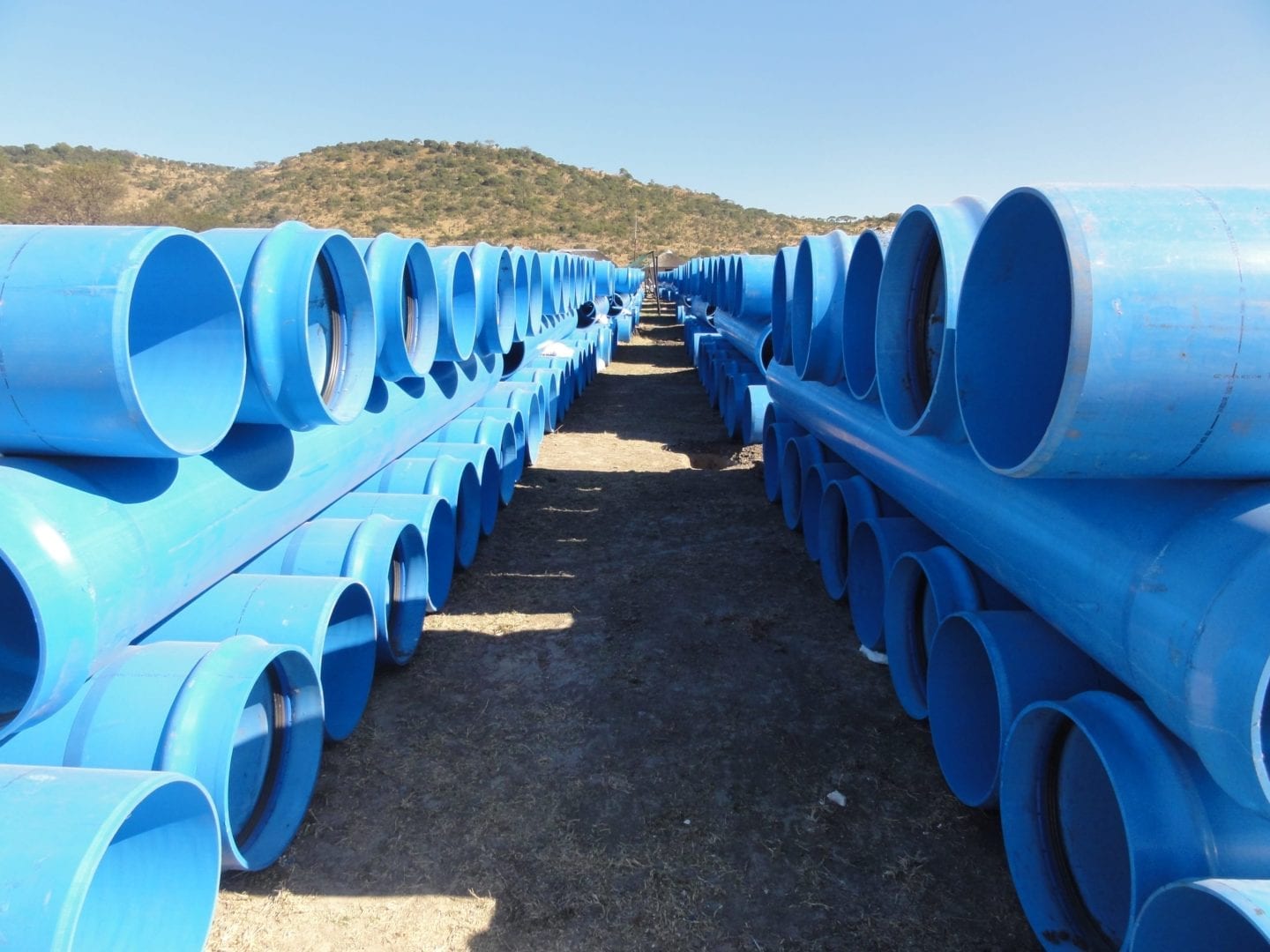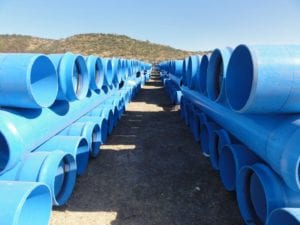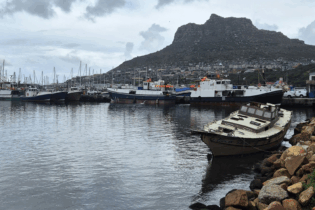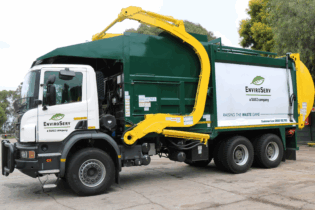 Sizabantu Piping Systems has invested extensively in new technologies, like PVC-O pipes, to ensure that municipalities in South Africa, as well as current and future utilities across the sub-Saharan region, have sustainable solutions for their water reticulation requirements.
Sizabantu Piping Systems has invested extensively in new technologies, like PVC-O pipes, to ensure that municipalities in South Africa, as well as current and future utilities across the sub-Saharan region, have sustainable solutions for their water reticulation requirements.
- The speed of installation due to the familiar push-fit socket system, as on all PVC systems, compared to steel pipe welding, which requires coating, regular external and internal repair, plus the need to X-ray each joint.
- No corrosion. PVC-O pipes have an estimated design life of 100 years, compared to the standard 50-year guideline for conventional PVC and metallic pipes.
- Zero maintenance is needed for PVC-O.
- Lower celerity enables higher design velocities that increase capacity.
- No cathodic protection required.
First, let’s look at what the abbreviations above stand for. It’s about understanding how the thermoplastic family fits together:
- U-PVC – un-plasticised polyvinyl chloride
- M-PVC – modified un-plasticised
polyvinyl chloride - PVC-O – molecular-oriented un-plasticised polyvinyl chloride.
impact resistance. In summary, based on the ISO procedure, the minimum required strength (MRS) at 50 years for Molecor TOM 500 PVC-O is
50 MPa. For U-PVC and M-PVC the MRS is
25 MPa. Thus, the long-term (50+ years, strength of Molecor TOM 500 PVC-O is 100% greater than that of U-PVC and M-PVC. TOM 500 is the highest orientation, improving on previous 300, 355, 400 and 450 classifications that enables larger pipe diameters and higher pressures. TOM 500 is twice as strong as standard PVC pipe. Is the African export market important? Yes, the demand for potable water in Africa is enormous and our user-friendly products will assist in speeding up the supply of much-needed reticulation systems, particularly in urban centres where the trend points to exponential expansion, as rural communities increasingly migrate to towns and cities seeking better prospects. Here, plastic pipes are the best option. What key infrastructure projects have SPS been involved with? The consulting engineering fraternity and the major municipalities around South Africa have welcomed the introduction of PVC-O technology. We have supplied schemes to every major water authority and municipality in South Africa. This amounts to in excess of 1 000 km of piping to date. Where does SPS lead in terms of new technologies? Certainly in terms of the introduction of the internationally recognised Molecor TOM 500 PVC-O technology. To date, we have successfully supplied up to 800 mm diameter PN 20 bar pressure pipe, which is the largest application of PVC pressure pipe recorded so far for Africa. Being a “system” supply company, we also have introduced and are introducing fitting ranges that complete the reticulation system. We have a proactive relationship with the consulting engineering fraternity, who frequently seek our advice on which products to use for a specific application. What is the future for plastic pipes? Plastic pipes come with many inherent advantages versus other traditional materials, such as their non-corrosive properties, which enable a longer design life. In addition to very low maintenance, no cathodic protection is required. Additional advantages include better hydraulic performance, lower pumping costs, and better surge or water hammer capabilities. Essentially, plastic pipe is a tried and tested product well suited for Africa and the world of infrastructure. Is composite high-pressure pipe gaining in popularity locally? Yes, especially for the emerging contractor who frequently lacks access to high-end equipment and pipe fabrication capabilities usually owned and operated by mainstream construction companies. This is particularly the case for steel pipelines, which require intensive skills coupled with expensive and specialised equipment. The South African government is encouraging and promoting the emerging contractor segment, which commonly has limited access to capital finance. Here, our user-friendly, tried-and-tested plastic products are gaining popularity as an easy-to-install and cost-effective solution. What’s your view on South Africa’s water loss challenges? We need to encourage and create a culture of ownership, where proper maintenance programmes are implemented to reduce the wastage created by poorly maintained water infrastructure. Plastic pipes are the answer. Here, PVC-O redefines conventional thinking: it’s a better alternative for large-diameter, high-pressure metallic pipes for bulk water supply up to 1 200 mm diameter and PN 25 bar.








